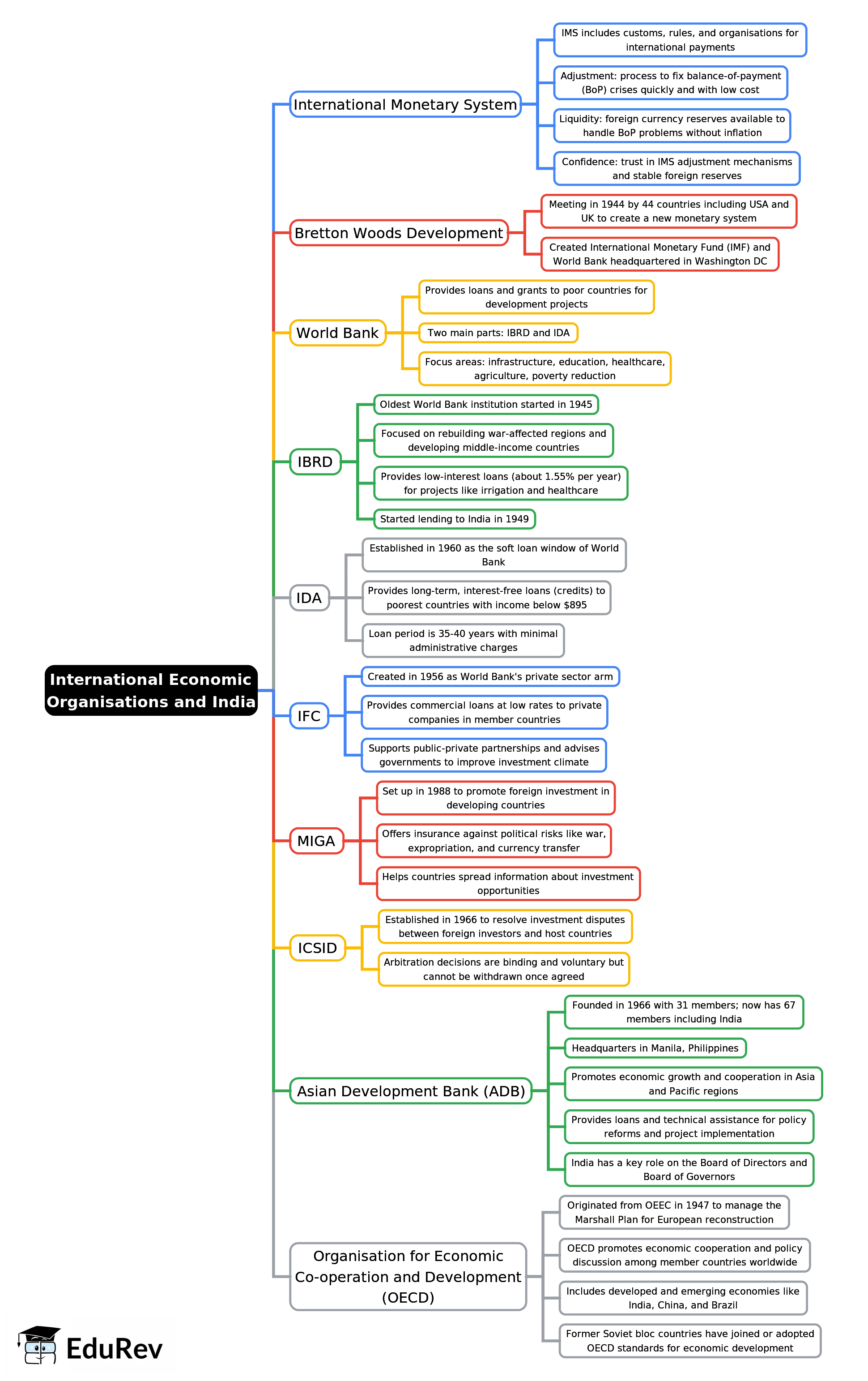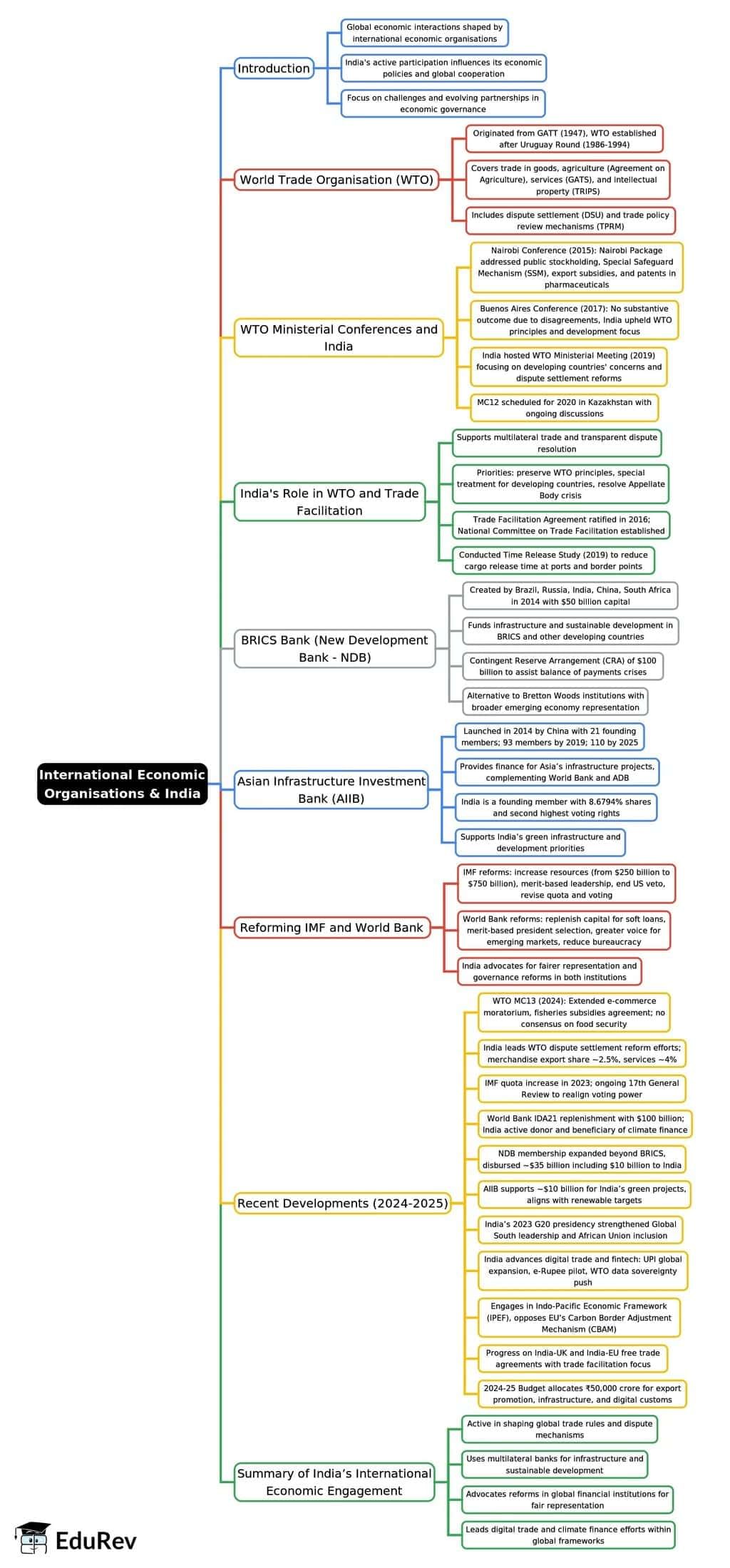UPSC Exam > UPSC Notes > Indian Economy for UPSC CSE > Mind Map: International Economic Organisations & India
Mind Map: International Economic Organisations & India | Indian Economy for UPSC CSE PDF Download
International Economic Organisations & India - 1

International Economic Organisations & India - 2
The document Mind Map: International Economic Organisations & India | Indian Economy for UPSC CSE is a part of the UPSC Course Indian Economy for UPSC CSE.
All you need of UPSC at this link: UPSC
|
151 videos|488 docs|159 tests
|
FAQs on Mind Map: International Economic Organisations & India - Indian Economy for UPSC CSE
| 1. What are the major international economic organizations that India is a part of? |  |
Ans. India is a member of several significant international economic organizations, including the World Trade Organization (WTO), International Monetary Fund (IMF), World Bank, Asian Development Bank (ADB), and BRICS (Brazil, Russia, India, China, and South Africa). Each organization plays a crucial role in facilitating trade, providing financial assistance, and promoting economic development and cooperation among member countries.
| 2. How does India's participation in the World Trade Organization impact its economy? |  |
Ans. India's participation in the World Trade Organization (WTO) impacts its economy by promoting trade liberalization, ensuring fair trade practices, and providing a platform for resolving trade disputes. It allows India to access global markets, enhance its exports, and attract foreign investment. Additionally, participating in the WTO helps India align its trade policies with international standards, which can lead to economic growth and development.
| 3. What role does the International Monetary Fund play in India's economic policy? |  |
Ans. The International Monetary Fund (IMF) plays a significant role in India's economic policy by providing financial assistance during balance of payments crises, offering policy advice, and conducting economic surveillance. The IMF supports India in maintaining macroeconomic stability, improving fiscal health, and implementing structural reforms that can enhance economic growth and stability.
| 4. What are the benefits of India's membership in the Asian Development Bank? |  |
Ans. India's membership in the Asian Development Bank (ADB) provides several benefits, including access to financial resources for development projects, technical assistance, and knowledge sharing. The ADB supports infrastructure development, poverty alleviation, and sustainable economic growth in India. Additionally, it helps India in capacity building and improving regional cooperation in Asia.
| 5. How does India's role in BRICS contribute to its global economic strategy? |  |
Ans. India's role in BRICS contributes to its global economic strategy by fostering cooperation among emerging economies and enhancing its influence in global economic governance. Through BRICS, India collaborates on various issues such as trade, investment, and development, which helps strengthen its economic ties with Brazil, Russia, China, and South Africa. This collaboration can also provide India with a platform to advocate for reforms in international financial institutions and enhance its economic stature on the global stage.
Related Searches





















